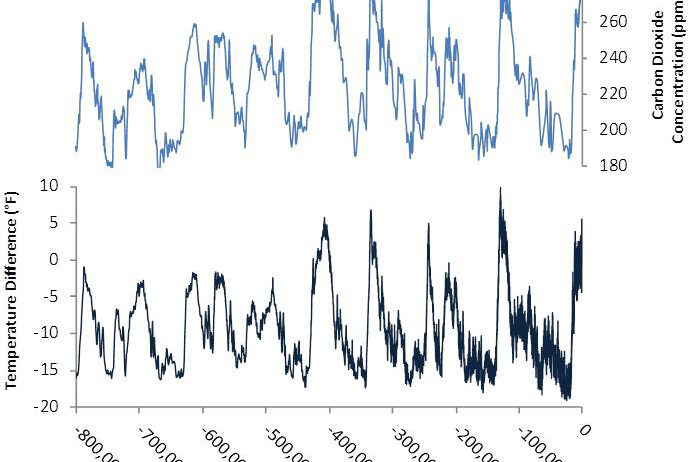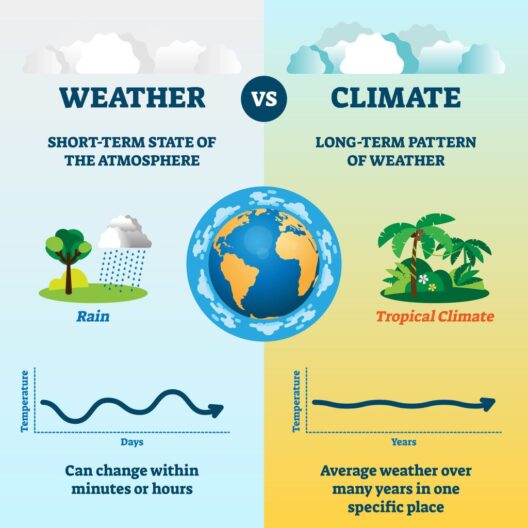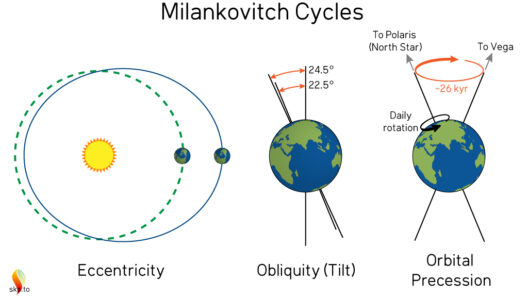Climate change, a term that has become increasingly prevalent in contemporary discourse, represents not merely an abstract concept but a formidable reality with tangible implications for our planet. To navigate the complexities of climate change, it’s essential to demystify the core factors that drive this phenomenon. Imagine Earth as a finely-tuned orchestra; climate change is akin to an unfortunate discord in harmony, affecting every section — from the strings of the atmosphere to the brass of the oceans.
At the heart of climate change lies the greenhouse effect, a natural and essential mechanism. Like a thick, cozy blanket, greenhouse gases encircle our planet, trapping heat from the sun and keeping it warm enough to support life. However, in recent centuries, human activity has amplified this effect dramatically, weaving in synthetic fibers that create an insulative layer far too thick. This excessive accumulation of gases such as carbon dioxide (CO2), methane (CH4), and nitrous oxide (N2O) has coalesced, transforming a comforting blanket into an oppressive shroud.
The primary culprit of this intensified greenhouse effect is anthropogenic activities — actions initiated by humans. The combustion of fossil fuels, such as coal, oil, and natural gas, is a significant contributor. Each time we ignite these resources to power our homes, fuel our vehicles, or energize our industries, we release copious amounts of CO2 into the atmosphere. This process can be likened to a relay race where each baton handoff is filled with harmful emissions, progressively hastening the warming of our planet.
Deforestation stands as another key actor in the climate change drama. Trees operate as nature’s carbon sinks, absorbing CO2 and giving back oxygen. Yet, when forests are razed for agriculture or urban development, not only does this vital carbon capture cease, but the stored carbon is also released back into the atmosphere. The irrevocable loss of these green giants is akin to removing foundational bricks from an archway; the structural integrity is compromised, leading inevitably to collapse.
Moreover, agriculture itself contributes significantly to climate change. When soil is tilled and crops are cultivated, vital microorganisms that sequester carbon are disrupted. Furthermore, livestock farming produces methane, a greenhouse gas that is far more potent than CO2 over a short time. Each burp or flatulence from cattle becomes a tiny, illuminated torch in the bonfire of climate change, fueling the blaze that threatens our biosphere.
The transportation sector heralds another major source of greenhouse gas emissions. Automobiles, airplanes, and ships create a continuous stream of CO2 as they traverse global networks. The ceaseless rhythm of engines igniting mirrors the unrelenting march of progress; however, it simultaneously leaves a trail of emissions in its wake. The dense network of roads and flight paths creates a spiderweb of consumption that tangibly strings together vast regions, perpetuating the cycle of pollution.
Industrial processes cannot be overlooked. Manufacturing facilities emit vast amounts of greenhouse gases during the production of goods. The chemical reactions involved often liberate gases as byproducts — a hidden cost that belies the convenience of modern life. Envision industry as a grand factory of delights, where consumerism’s siren song draws us in, yet the price is borne by our planet’s climate.
Oceanic changes also play a crucial role in climate change oscillations. The oceans act as a massive heat sink, absorbing substantial amounts of CO2. However, this leads to ocean acidification, which jeopardizes marine life, particularly organisms that rely on calcium carbonate for their shells and skeletons. With diminished marine populations, the impact reverberates through food chains and ecosystems, amplifying the hazards of climate change.
For many, the narrative of climate change can feel abstract or distant, yet the physical manifestations are becoming increasingly evident. Rising sea levels inundate coastal cities, extreme weather conditions wreak havoc, and ecosystems are disrupted, spawning an urgency to act. These changes can be seen as a brushstroke on a canvas; the painting of Earth is becoming marred with hues of distress as chaotic brush movements redefine landscapes and life.
Addressing climate change demands a multifaceted approach encompassing mitigation and adaptation strategies. Mitigation involves reducing greenhouse gas emissions, transitioning to renewable energy sources such as wind, solar, and hydroelectric power. This shift would be akin to a symphony reworking its composition, preserving the essential notes while removing dissonant chords.
Adaptation strategies necessitate resilience building within communities. This could entail constructing infrastructure that withstands climatic extremes, modifying agricultural practices to conserve water, and restoring ecosystems to ensure they continue to provide critical services. Like a chess player anticipating moves ahead, societies must prepare pragmatically for the impending challenges of a warming world.
In conclusion, understanding how climate change is caused allows us to realize the depth of its societal and environmental ramifications. It is a complex interplay of human activity, technological advancement, and natural processes, all converging in a significant struggle for our planet. Your action matters; each small change collectively amalgamates into a powerful movement towards sustainability. Just as the Earth orchestrates its myriad symphonies, it is our shared responsibility to ensure a harmonious balance within this delicate ecosystem — before it becomes a cacophony that we cannot silence.





